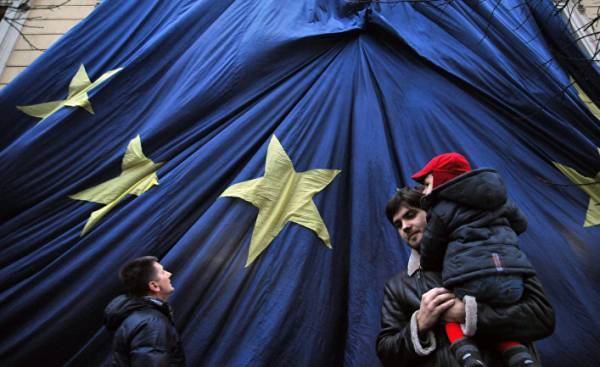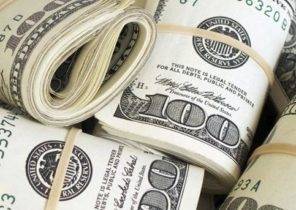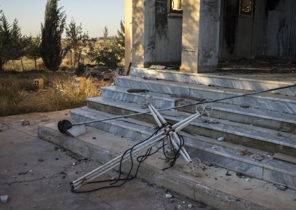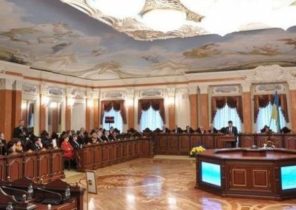
When the leaders of Ukraine and the European Union met last week at the summit, both sides had reason to celebrate. For President Poroshenko it was an opportunity to draw attention to the recent steps to implement the European aspirations of Ukraine, which played such an important role during the Maidan revolution in 2013. The President of the European Council, Donald Tusk, gave the President of Ukraine a copy of the Association Agreement between the European Union and Ukraine, which the EU finally ratified last week, three years after its initial approval. It should also be noted that it in some point was under threat as a result of the Dutch referendum. This agreement includes a free trade Pact, which, after partial introduction with effect from 1 January this year has helped to increase exports from the EU by 25%. In addition, since may, the Ukrainians have received the opportunity to visit EU countries without a visa.
The summit was also a victory of sorts for the EU. To the surprise of many, the EU was able to preserve unity in its policy towards Ukraine and Russia on the background of recent political unrest elsewhere on the continent. He kept the sanctions regime, which did not seem forced Russia to reverse its illegal annexation of Crimea or stop supporting separatists in the Donbas, in the South-East of Ukraine, but at least he helped contain Russian aggression in other parts of Europe, and to avoid large flow of refugees from Donbas, which could be another serious test for European unity. Especially in Eastern Europe, where the war in Ukraine is largely perceived as a European war, it is considered an important success.
However, for the warm words hiding the real concern. Kiev wanted the summit ended with a joint statement which expressly would be backed by long-standing hope of Ukraine regarding the EU membership. The current leadership of the European Union wanted that too. The Estonian government, which now moved retireme presidency, insisted on the adoption of the text, which would be recognized or just considered this the goal of Ukraine. However, the interim government of the Netherlands vetoed a similar version of the document, fearing a sharp reaction of public opinion in the country after last year’s referendum, the results of which the Association Agreement was rejected.
Instead, Mr. Tusk just read out the preamble of the agreement, which “welcomed the European choice” of Ukraine, while the European Council in its statement said that the agreement in response to the concerns of the Netherlands does not contain mention of membership in the European Union.
But does the EU’s refusal to support the prospect of Ukraine’s membership in the European Union? Perhaps in the short term has not. All parties agree that it will take years — even decades — before Ukraine is ready for accession, given the large-scale challenges associated with a radical restructuring of its economy and institutions. Meanwhile, Brussels continues to give Kiev financial and technical assistance to deepen its integration with the European Union, and Kiev to consult with Brussels over reforms in order to maximize compliance with the rules of the European Union. Over time there will be causes which would allow Ukraine to participate in such arrangements of the European Union as a single market, a customs Union or even the Schengen area open to such non-members of EU countries such as Norway and Switzerland.
But even in this case, the lack of long-term prospects worried about Kiev. The Ukrainian government is trying to rebuild the country under difficult conditions. After the Russian invasion in 2014 Ukraine’s economy declined by 17%, while the national currency lost 70% relative to the dollar, and as a result inflation reached 60%. This has created a difficult political environment for such reforms as a rejection of subsidized natural gas prices for business and households.
Meanwhile, Russia seems determined to raise the price of the program of Ukrainian reforms. She continues to destabilize the Donbas, where the level of violence has increased this year, as well as constantly conducting cyber attacks against the government, which negatively affects the investment and increases the pressure on public finances. According to Kiev, the goal of Russian President Vladimir Putin is to make Ukraine a failed state, which in turn destabilizie the European Union as a whole.
However, Kyiv has achieved important successes. He managed to nearly balance the budget and reduce inflation to below 10%. The economy began to rise again, and the restructuring of the gas market, banking system and government procurement has led to easing the pressure on public finances and reduced opportunities for corruption. In addition, on the approach of other very important reforms, including the decentralization of public administration, pension system, health care and land reform. However, any reform in Ukraine is hampered by group interests, including the interests of influential oligarchs. The ability of the government of Ukraine to carry out reforms too low, as in the system of state management, not enough talent, and, in addition, it is constrained to the guidelines of the Soviet era. Although Kiev has created six new institutions to fight corruption, there is no special anti-corruption loan and no resonance convictions.
To maximize the chances of Kiev to the success of the EU need to find a way of lowering prices of Ukrainian political reform. According to Kiev, offer a clear path to EU membership will strengthen its influence in the country. Estonia tries to influence the leaders of the European Union in the hope that they would send a similar signal at the next summit in November. Maybe, depends on not only the stability in Ukraine.







